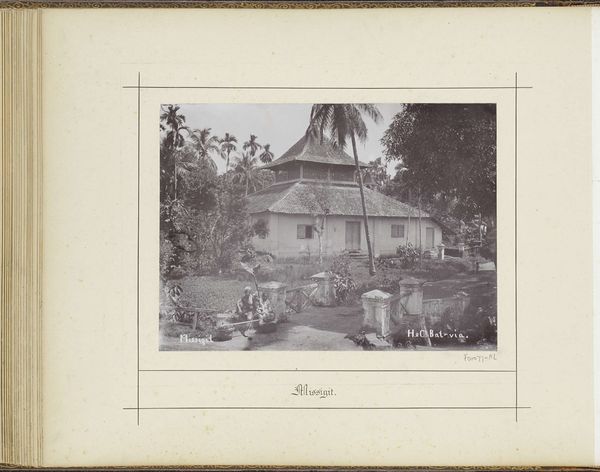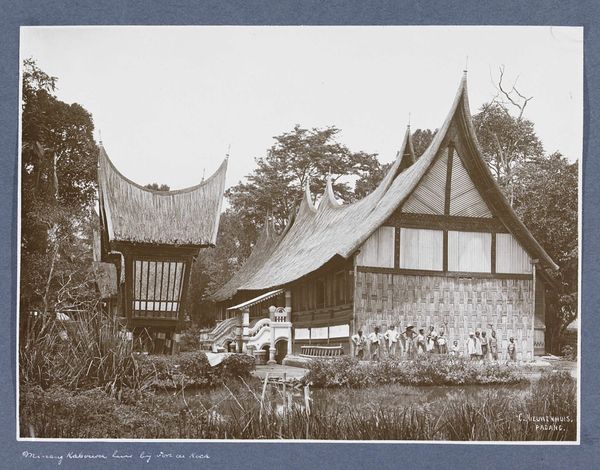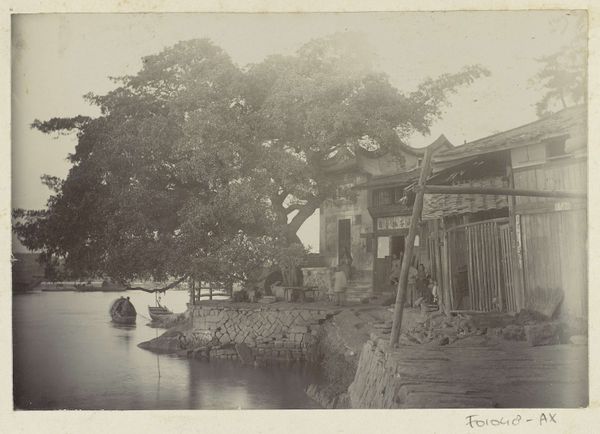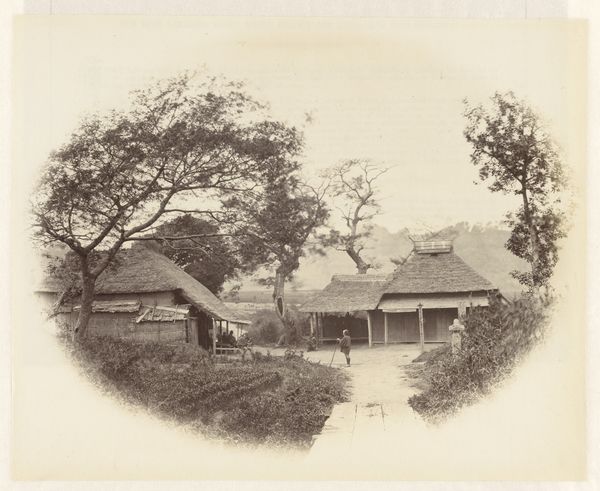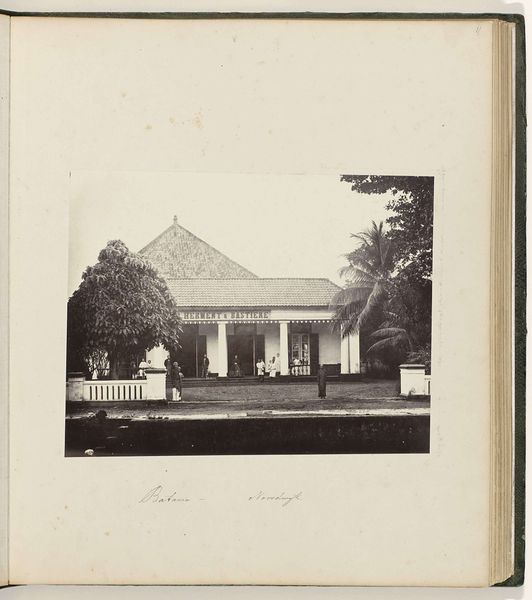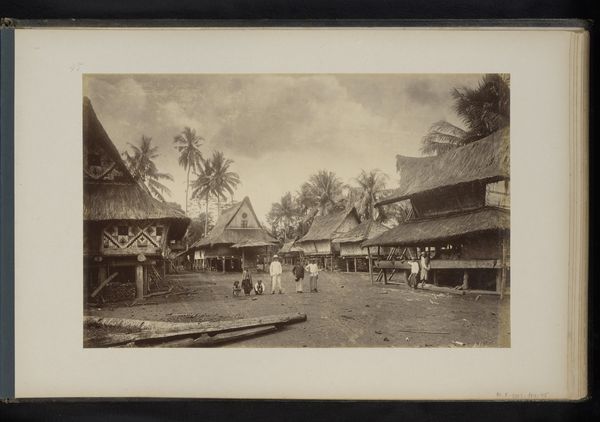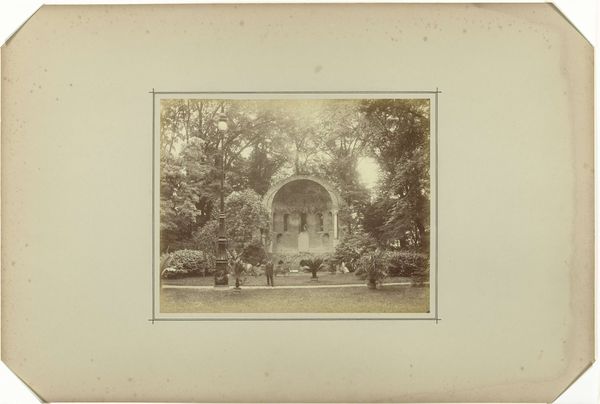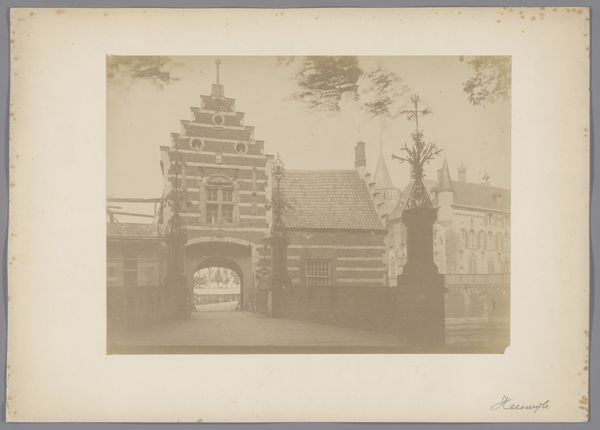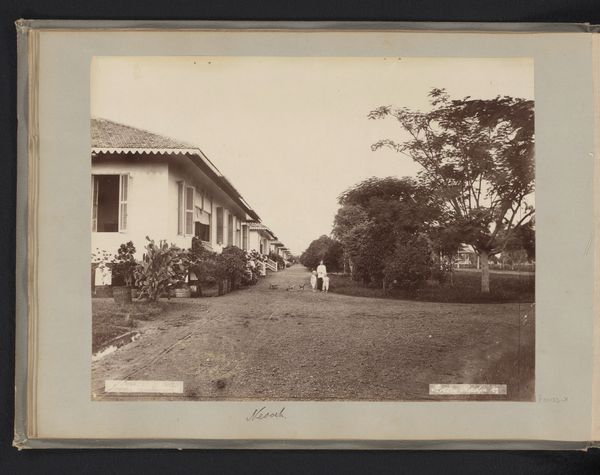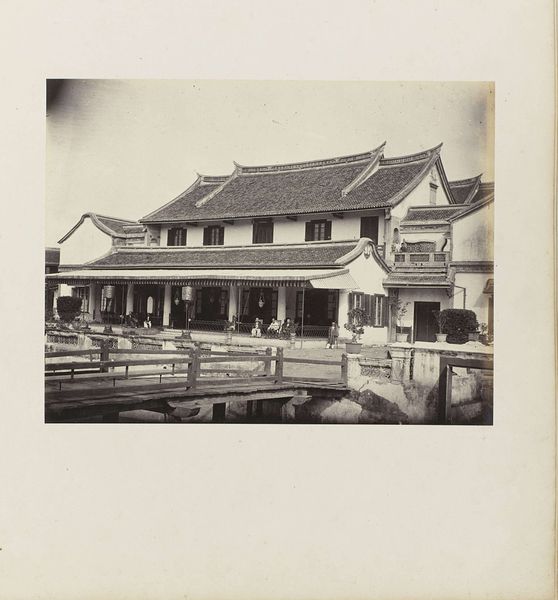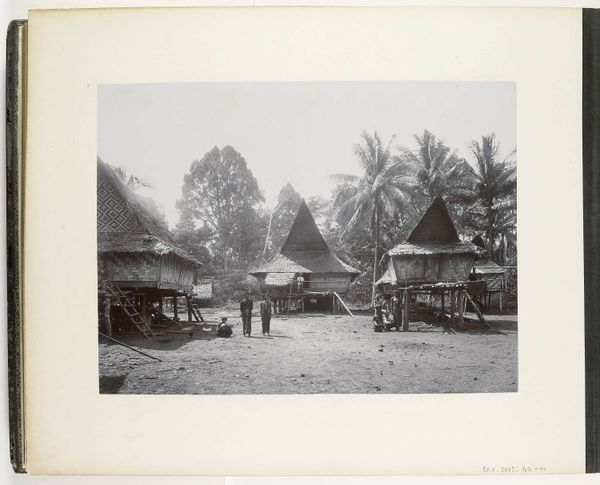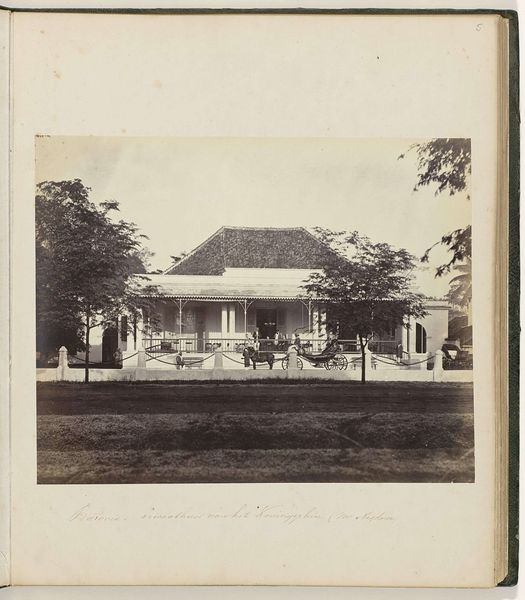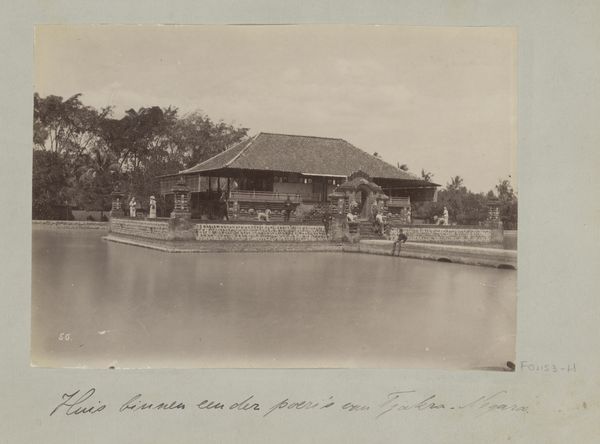
Kinderen en volwassenen bij een rijstschuur in Batipoeh op Sumatra c. 1895 - 1905
0:00
0:00
photography, albumen-print
#
asian-art
#
landscape
#
photography
#
cityscape
#
albumen-print
Dimensions: height 275 mm, width 215 mm
Copyright: Rijks Museum: Open Domain
Editor: This albumen print, taken by Christiaan Benjamin Nieuwenhuis between 1895 and 1905, depicts children and adults at a rice barn in Batipoeh, Sumatra. There's a stillness to it, a captured moment of daily life. How do you interpret this work, seeing it now? Curator: It’s fascinating how seemingly simple images can hold so much. This isn't just a depiction of a tranquil Sumatran scene; it's a visual record deeply embedded in colonial history and power dynamics. We see the architecture of the rice barn, likely a communal structure central to the village's economy, juxtaposed with the figures. How does their positioning, their clothing, strike you in relation to that architecture and landscape? Editor: I hadn’t thought of it in those terms. Their clothing seems…formal, almost posed, contrasting with what I imagine daily life would be like. Is it possible the photographer influenced that? Curator: Precisely. Nieuwenhuis, through his lens, curated a specific narrative. The very act of photographing these individuals and their environment was an intervention. Consider, too, the implied audience: predominantly Westerners. What messages about Sumatra and its people were these images intended to convey, and how do those messages reflect the power imbalances inherent in colonialism? Editor: So, it's not just a snapshot but a constructed view meant for a particular gaze? Curator: Absolutely. Think about how the "exotic" and the "picturesque" were commodified during that era, reinforcing stereotypes and justifying colonial agendas. Even the act of preserving culture can inadvertently freeze and ossify it within power dynamics, shifting the narrative away from those living within it. The cultural value associated with the exotic by a Western audience ultimately affects the subject captured, regardless of intention. Editor: That shifts my understanding completely. I was focusing on the beauty of the landscape, but now I see how complex it is. Curator: Indeed. These historical photographs serve as vital artifacts, inviting critical interrogation into the socio-political contexts in which they were created and consumed. They remind us of the importance of continually questioning whose stories are told, and how.
Comments
No comments
Be the first to comment and join the conversation on the ultimate creative platform.
